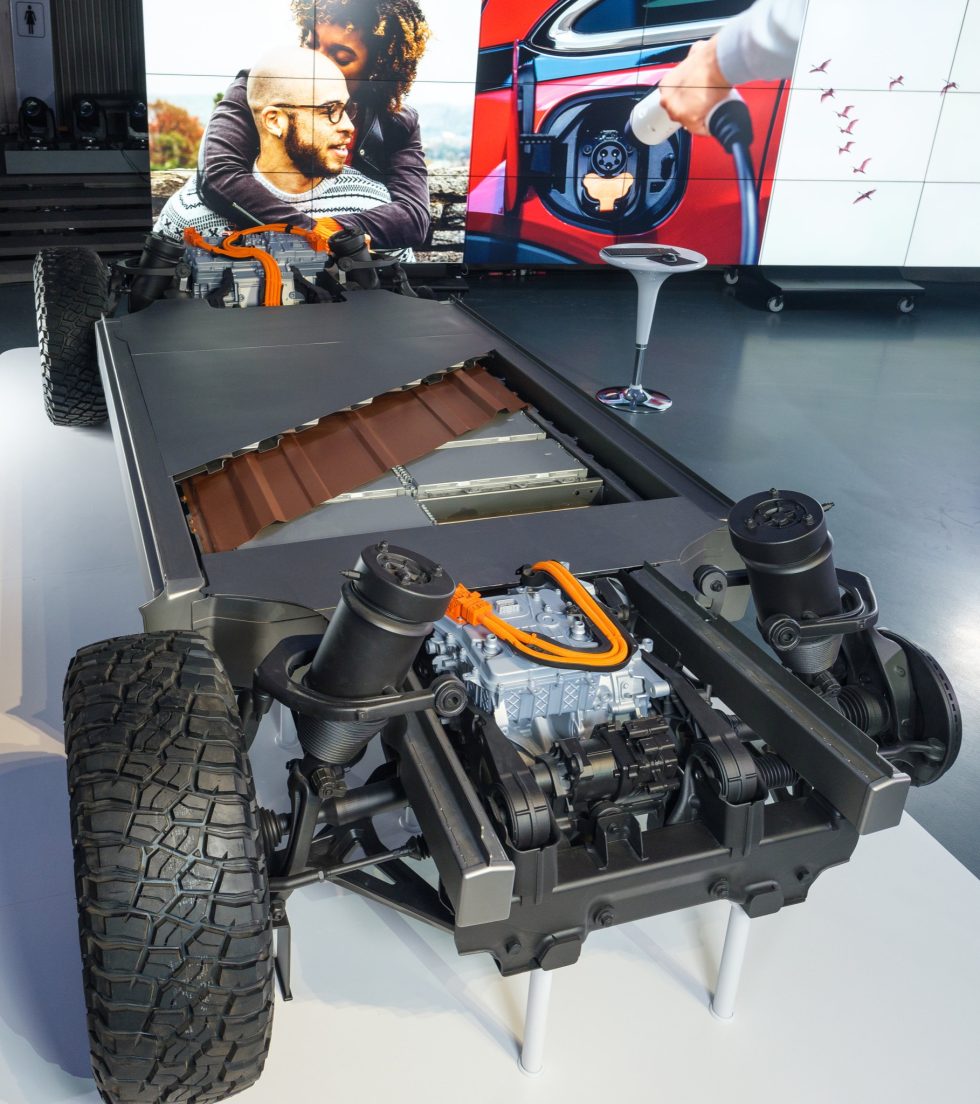General Motors announces new battery platform, claims $100/kWh soon

This is one of the potential layouts for GM's new Ultium battery platform and BEV3 vehicle architecture. You can tell from the tires it's a truck frame, and if you click on the image to enlarge it, you might be able to see that the cells are aligned vertically, which GM says allows for better energy density at the cost of a taller pack. [credit: Steve Fecht for General Motors ]
On Wednesday afternoon in Warren, Michigan, General Motors announced it has developed a new, third-generation battery electric vehicle platform (called BEV3) and a new flexible battery architecture-called Ultium-that will underpin a wide range of new BEVs across the Chevrolet, Cadillac, Buick, and GMC brands. It's the latest in a series of recent announcements by GM regarding its electrified future; in December 2019, the carmaker revealed a $2.3 billion joint venture with LG Chem to build a battery factory in Lordstown, Ohio, then followed that in January with plans to spend $2.2 billion refitting its Detroit-Hamtramck factory to exclusively build BEVs.
Breaking the $100/kWh barrierGM has gone for a pouch cell design for the Ultium batteries, which can be configured in different ways depending on the vehicle and its needs. For a big pickup or SUV, that means pouches arranged vertically in the modules (i.e., with their second-longest edge vertically), which GM says is best for energy density, but at the tradeoff of a taller pack. For cars that need something a little lower profile, the pouches can be stacked on top of each other in a module. GM says that a car would use between six and 12 modules in a pack, with up to 24 in a 200kWh, 800V double-layer battery pack for something like the 1,000hp electric GMC Hummer that was trailed at this year's Super Bowl. (The smallest six-module packs would be 50kWh units.)
The battery modules also include their own battery-management electronics. That has cut the amount of wiring in a pack by 88 percent over the current Chevrolet Bolt EV battery pack. GM says that if you have to replace an individual module within a battery pack, the electronics can talk to each other and recalibrate the pack easily. That's because each module knows what kind of chemistry its cells use.
Read 3 remaining paragraphs | Comments